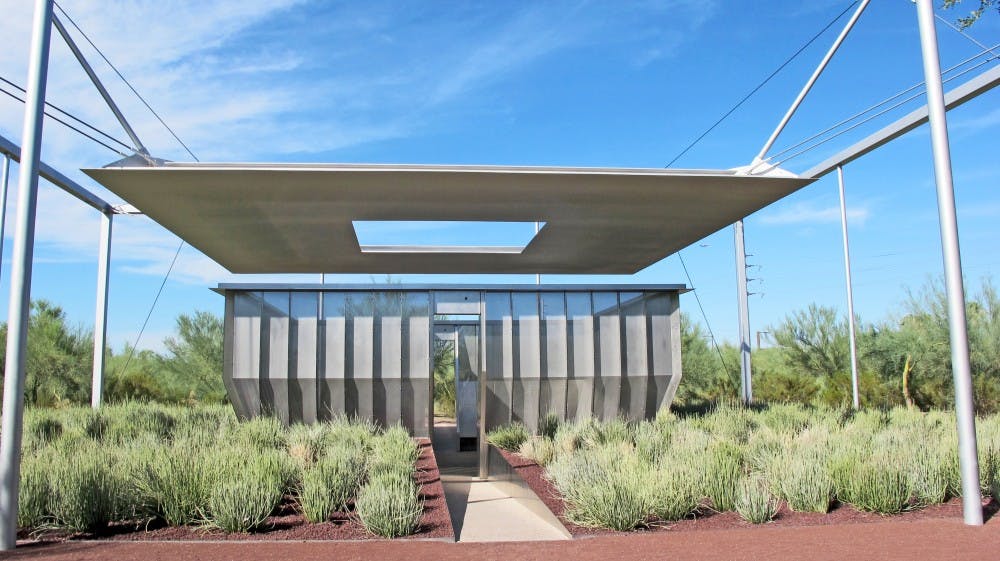You might have experienced a sudden burst of light in your peripheral vision while trotting around Arizona State University’s Tempe campus recently. The momentary glimmer could have been the reflection of one of the 23 pieces in ASU’s public art collection restored this past summer during the most comprehensive conservation effort in the collection’s history. Some of the works, which hadn’t been restored in nearly a decade, were in desperate need of restoration.
Southwest Pieta by Luis Jimenez was among the works most in need of conservation.
The 10-foot fiberglass sculpture depicting a kneeling man cradling a woman, located near the entrance of the Arizona State University Art Museum, “is vulnerable because it has no shade and the temperatures get really high over there in that space, and the sun beats down and the paint fades very quickly,” conservator at the ASU Art Museum, Dana Mossman Tepper, says.
The conservator, who sat on the selection committee that chose the firm to carry out the project, approximates that the piece hadn’t been repainted or given a new protective coating in ten years.
The university no longer has an official public art program and the responsibility of maintenance and restoration has fallen to ASU’s Public Art Committee with assistance from ASU Facilities Development and Management, project manager, Karen Streicher says.
“As the appointed caretakers it is our responsibility to make sure these pieces continue to remain viable for enjoyment and discovery for students, staff, visitors and guests to our campus,” Streicher says.
The most recent conservation effort was funded with leftover money from the former public art program, but currently, there is no plan in place nor source of funding for future restorations.
This restoration was a costly undertaking, but part of the reason is was so expensive, is because the general maintenance and re-coating hadn’t been taking place, Tepper says.
“Treatment can be expensive,” she says, “but preventative conservation doesn’t need to be expensive.”
The preventative kind of maintenance that would reduce long-term costs, Tepper suggests, include: renewing protective coatings, replacing missing pieces, filling in losses, replacing faded paint and re-painting.
Unfortunately, the conservation of art is often an afterthought, and as budgets get cut, it is the maintenance that gets cut first.
ASU’s public art collection, named among the top 10 college programs in the country by Public Art Review back in 2006, is comprised of works as diverse as its student body.
Since the first public art commissions in the 1930’s, part of the New Deal era public works projects, ASU has developed an expansive collection ranging from murals to bronze sculpture, and includes pieces from nationally recognized, award-winning artists like James Turrell, whose piece, Air Apparent, was a gift to the school in 2012.
“ASU’s public art collection is a considerable artistic and financial asset, and for pieces that represent a major donation (like the Turrell), you don’t want them deteriorating,” says author and ASU art professor, Betsy Fahlman. “They are also a point of pride for the university, and comprise a museum without walls, something that gives texture and identity to the campus.”
The reality for art, like all other material objects, is that it deteriorates over time.
If works of art are to remain for years to come, this creates a bit of a problem, especially if those works exist outside in Arizona, where they are exposed to extreme temperatures, intense sunlight, wind, dust, rain, bird droppings, pollution, and even vandalism.




